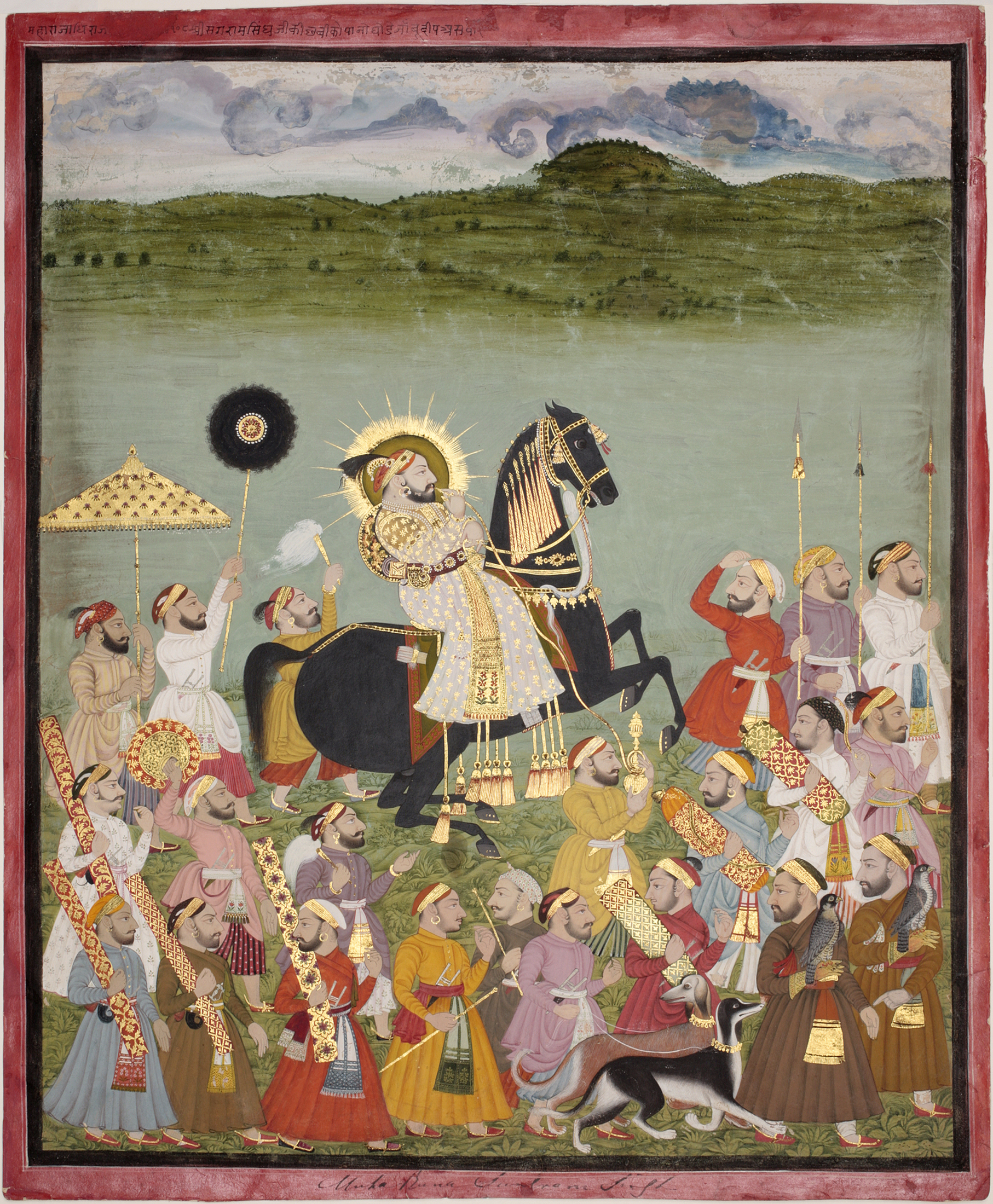 Print Page
Print Page
 Print Page
Print Page
Location: Udaipur, Rajasthan, India
Materials: opaque watercolour, gold and silver on thick paper
Dimensions: 49.5 x 40.9cm
Accession Number: MSS 965
Other Notes:
The procession here shows courtiers with royal standards, and behind the maharana are officials with a fly-whisk, a fan, and the parasol of state, as well as an attendant bearing a hookah. Attendants bear muskets in rich brocade bags, and in the lower right- hand corner are two falconers and a pair of salukis with gold collars. Sangram Singh (r 1710–1734), gorgeously arrayed, is given a halo, and although his horse is prancing, he is composedly smoking. His horse’s rich caparison, which almost outdoes his costume, reflects the enormous importance given by the Rajasthani rulers to their horses. It is quite common in Mewar equestrian painting for the horse to be identified but not the ruler.
The upper border and the back of the painting are inscribed in devanagari script, ‘Maharana Sangram Singh riding his horse Jambudvipa’; the lower border is inscribed in English, though not in a modern hand, ‘Maha Rana Sangram Singh’. The back also bears the Mewar inventory number, ‘2/110’.
Bibliography:
L. York Leach, Paintings from India, The Nasser D. Khalili Collection of Islamic Art, volume VIII, London 1998, cat.39, pp.140–41.
J.M. Rogers, The Arts of Islam. Masterpieces from the Khalili Collection, London 2010, cat.342, pp.288–9.
